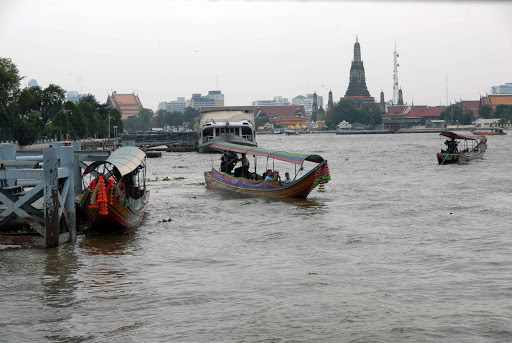If there is one thing you should definitely not miss in Subic Bay Freeport, it is the nature tour at the Pamulaklakin Trail. I took the tour. Several days later I visited the Aeta Tribal Village.
The trail is situated along the road to the Binictican housing complex. It is a little obscure and there is a big chance you would miss it on your first pass if you are not paying attention. Once in, you might not find the compound distinct from any park or place.
What is special is the tour, or more appropriately the lesson that the Aeta guide will give you.
An extended family is seen here waiting for their morning ride to take them to a market to sell their crafts .
A child waiting outside the complex to accompany her mother and extended family, who go daily to a local super market to sell their crafts.Wild honey is one of their special items.
When I began my trek toward the tribal village, I wondered what type of clothes would be worn there.
.
Today most Aeta who have been in contact with lowlanders have adopted the T-shirts, pants and rubber sandals .
Example of a tree growing in the jungle.
Using an Aeta guide we walked almost two hours through the jungle and then on to red dirt road.
Along the trail where two boys collecting nuts to use to invent and play games.
The first dwelling seen on the trail was this thatched roof house.
Children stop at a family store just to look and possibly day dream about something to eat.
Another dwelling along the trail.
A young girl takes a break from helping her family.
Then from no where cyclists peddled down the trail.
Cycling is a big sport in the Philippines.
I'm assuming that these cyclists were peddling through the village and not residents of the village.
In the Aeta village (pronounced eye-ta) electricity is available but not every family can afford it.
It is mid morning and the sun is heating up the village..
Two boy are seen playing an electronic game.
In the evenings, one can hear karaoke music played for entertainment. Local beer is also sold.
Children in every culture invent games to play.
Here they are playing with a wooden pole.
Smaller children copy their older brothers and sisters.
The Aeta village has a population of 400 with 200 dwellings.
A couple stand in the doorway proudly hold their twins.
If seeing cyclists in the village was a surprise for me, I wondered what was happening here.
My guide did not follow me in into the open air building.
I introduced myself. the woman in the grey shirt .She returned my greeting describing herself was a Avon Sales Representative.
A young woman waits outside her mother-in-law's store.
The mother-in-law greeted me and I ask her if I may take her photograph?
Brushing back her hair she offered a faint smile.
I came across a church.
I asked the guide what religion he practiced. He said most of the residents are
catholic.
As I walked along I wondered where the cemetery was located.
One means of transportation in and out of the village is a pedicab.
Another mode of transportation is oxen.
The ox is a valuable beast used for work.
Here the ox is dragging material to construct a dwelling.
One source of water in the village is a stream which flows down from distant mountains.
The village school offers education to children.
A woman with her infant on her back walks toward the village center.
My guide holding his child, wife to his right with their children.
A young girl outside of the Pamulaklakin entrance.
A young Aeta boy waits for a ride to take him and his family to a market where their crafts will be sold.
A mother also waits for her ride to the city market.
A traditional dressed tribal member wishes you well.










































































